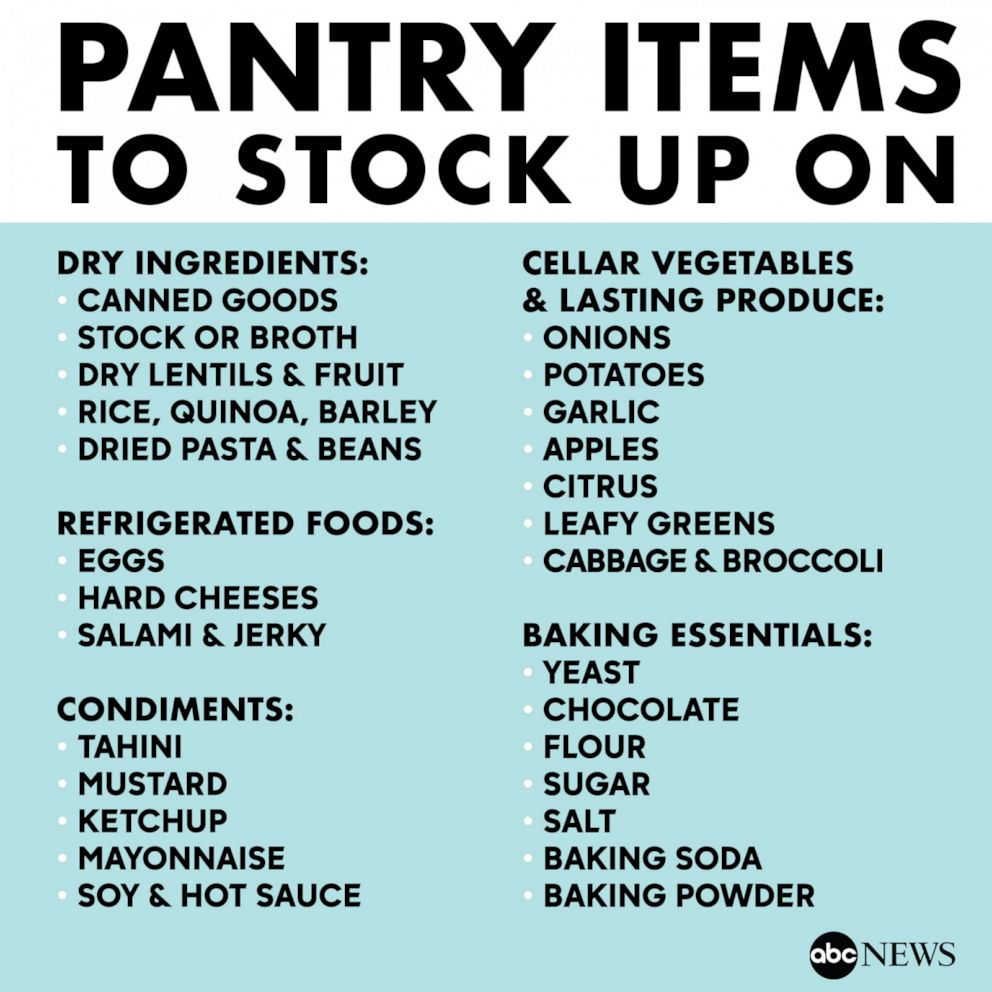These Are the Best Foods to Stockpile for an Emergency
It’s important to be prepared for any emergency that may arise. Having a stockpile of food is essential for surviving an emergency, especially if you don’t have access to grocery stores. But with so many food choices available, what foods can you stock up on? In this blog post, we’ll take a look at the essential foods to store in an emergency stockpile and how to ensure they last as long as possible. Read on to discover the best foods to stockpile for an emergency.
Non-perishable

When stocking your shelves with non-perishables, there are a few things you should consider. You will want to think about the items that you and your family regularly eat and make sure to have plenty of those items on hand. You will also want to take into account any special dietary needs that you or your family members have. Once you have a list of the items you need, you can start stocking up.
Canned goods
Canned goods are a great way to stock up your pantry. They have a long shelf life and can be used in a variety of recipes. When stocking up on canned goods, be sure to choose items that you and your family will actually eat. Consider stocking up on canned fruits, vegetables, soups, meat, and fish.
Dried goods
Dried goods are groceries that have been dehydrated or freeze-dried and can be stored for long periods of time. Popcorn, rice, pasta, cereal, flour, sugar, and beans are all examples of dried goods. These items can be found in the pantry section of most supermarkets.
When buying dried goods, it is important to check the expiration date. Most items have a shelf life of one to two years, but this can vary depending on the product. For example, dried beans can last up to ten years if they are stored properly. It is also a good idea to check the packaging for any signs of damage or leaks.
Frozen goods
Frozen goods are a great way to inventory non-perishable foods. This food group includes items such as meat, poultry, seafood, vegetables, and fruits. When stored properly, these items can last for extended periods of time without spoiling. carefully check the packaging of each item to ensure that it is properly sealed and free from any signs of freezer burn before purchasing.
Perishables
Every grocery store has a section dedicated to selling perishable foods. This is the section where you can find dairy products, meats, seafood, and fresh produce. These items have a shorter shelf life than non-perishables, so it’s important to know how to store them properly.
Dairy
Dairy items are a common staple in many refrigerators, as they provide a convenient source of nutrients like calcium and vitamin D. However, dairy products can also be a major source of foodborne illness if they are not properly handled and stored.
Dairy products should always be kept refrigerated at 40°F or below to prevent the growth of harmful bacteria. When shopping for dairy products, choose items that are sold cold and keep them refrigerated until you are ready to use them. If you need to transport dairy products, place them in a cooler with ice packs to keep them cool.
Dairy products should also be used within their expiration date for the best quality. Once a dairy product has expired, it should be discarded immediately as it may no longer be safe to consume.
When cooking with dairy products, always follow food safety guidelines to ensure that your food is cooked properly and not contaminated. Dairy products should be heated to an internal temperature of 165°F or above before consumption.
Produce

Produce includes all fresh fruits and vegetables that are normally eaten raw.
These items are classified as “perishable” because they can spoil quickly if they are not stored properly.
Perishable items should be kept refrigerated at all times to prevent them from going bad.
Some common perishable items include apples, oranges, bananas, strawberries, broccoli, carrots, celery, lettuce, tomatoes, spinach, potatoes, and onions.
Meat
When it comes to stocking up on meat, choose leaner cuts like chicken breast, pork tenderloin, lean ground beef, and flank steak. These will last in the freezer for four to six months. If you’re planning on storing ground beef, try freezing it in one-pound increments so it will be easier to thaw later. For steak, individually wrapping each piece in plastic wrap before placing it in a freezer bag will help prevent freezer burn. When you’re ready to cook, just thaw the meat in the refrigerator overnight or in a bowl of cold water (change the water every 30 minutes).
Whole grain
Whole grains may be one of the most important dietary staples for optimal health and well-being. With a variety of health benefits, whole grain foods can be a great addition to any diet. From helping to reduce the risk of certain chronic diseases to providing an abundance of essential vitamins and minerals, whole grain is a powerful source of nutrition that can be enjoyed in many different forms. Let’s take a closer look at the potential benefits of whole grain and how it can be incorporated into a healthy lifestyle.
:max_bytes(150000):strip_icc()/GettyImages-493239254-2000-798a2110521b4f988cdec4396386dd32.jpg)
How to Stock Your Pantry for Any Emergency?
When it comes to preparing for an emergency, having the right supplies handy is essential. Whether it’s a natural disaster or a pandemic, having enough food and other essential items on hand can help you in an emergency. It may sound daunting, but stocking your pantry for any emergency is actually quite simple.
The first step to stocking your pantry for any emergency is to create a list of non-perishable items you will need. Be sure to include items that you can prepare with limited resources, such as cans of tuna, beans, pasta, peanut butter, and canned vegetables. You should also include staples such as rice, flour, and oats. Don’t forget items like powdered milk and infant formula, if you have a baby in the house. It’s also a good idea to stock up on items like canned soups, canned fruits, and canned meats that can be used as quick meals.
The next step is to determine how much of each item you should buy. Consider buying in bulk, as this can help you save money. However, make sure to check the expiration dates on any items you purchase in bulk, as you don’t want to be stuck with food that has gone bad. Additionally, if you have a large family, you may want to buy a few extra cans or boxes of each item.
Another important step is to store your items properly. Choose a dry, cool location to store your pantry items. Make sure to keep items in airtight containers, such as plastic storage bins or jars, to keep them from spoiling.
Finally, remember to rotate your stock. Check the expiration dates and use the oldest items first. This will ensure that the food you have on hand is always fresh and safe to eat.
Stocking your pantry for any emergency can be a daunting task, but with a little planning and preparation, you can be sure you have the items you need to get through any situation. Make a list of the essential items you will need and determine how much of each item to buy. Store the items in a cool, dry location, and always remember to rotate your stock. Taking these steps now will help you be better prepared for anything life throws your way.
